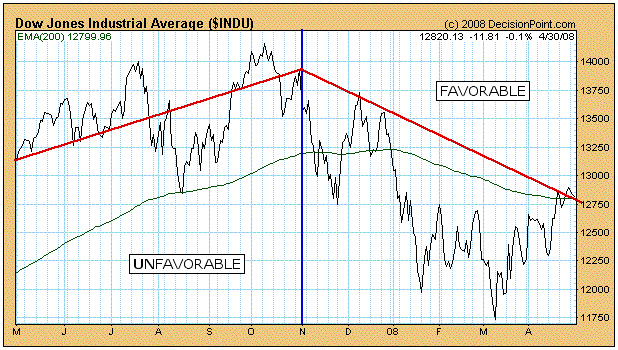Something you will be hearing a lot about for a while is that for the next six months the market will be carrying extra drag caused by negative seasonality. Research published by Yale Hirsch in the "Trader's Almanac" shows that the market year is broken into two different six-month seasonality periods. From May 1 through October 31 is seasonally unfavorable, and the market most often finishes lower than it was at the beginning of the period. November 1 through April 30 is seasonally favorable, and the market most often finishes the period higher.
Back testing of a timing model using the beginning of these periods as entry and exit points shows that being invested only during the favorable period (and being in cash during the unfavorable period) finishes way ahead of buy and hold. As I recall, the opposite strategy actually loses money. (See Sy Harding's book "Riding the Bear" for a full discussion of this subject. Seriously, I really, really recommend this book.)
While the statistical average results for these two periods are quite compelling, trying to ride the market in real-time in hopes of capturing these results is not always as easy as it sounds. Below is a chart that begins on May 1, 2007 and ends on April 30, 2008. The left half of the chart shows the unfavorable May through October period and the right half shows the favorable November through April period. As you can see, the seasonality periods performed exactly opposite of the statistical average. The point to be made is that, regardless of how the market performs on average, every year is different and presents its own challenges, and there is no guarantee that any given period will conform to the average.

Whether or not you find the seasonality strategy compelling enough to use, the statistics tell us that the next six months are apt to be dangerous, and that is something to keep in mind when evaluating the overall context of the market. The fact that this negative seasonality period is taking place during a bear market, makes it even more dangerous.
Bottom Line: We are in a bear market, and the 6-month period of negative seasonality has begun. Expect price reversals when the market gets overbought. When the PMOs (Price Momentum Oscillators) begin to reverse downward, that would be a good time to consider tightening stops and/or closing long positions.
